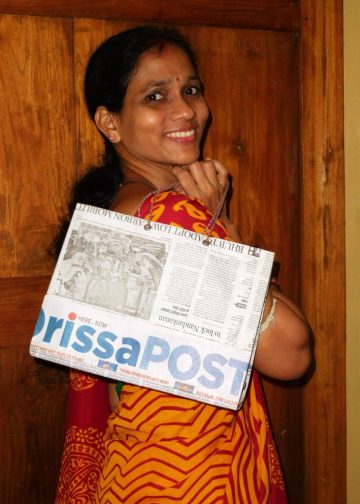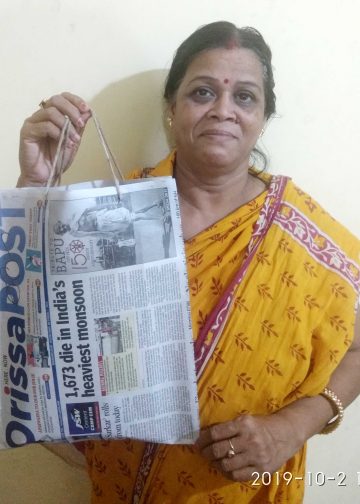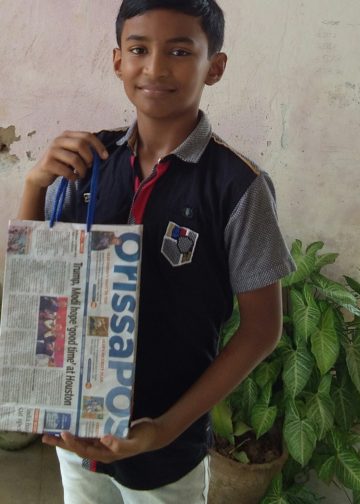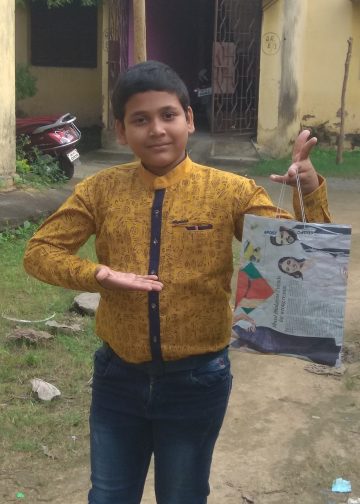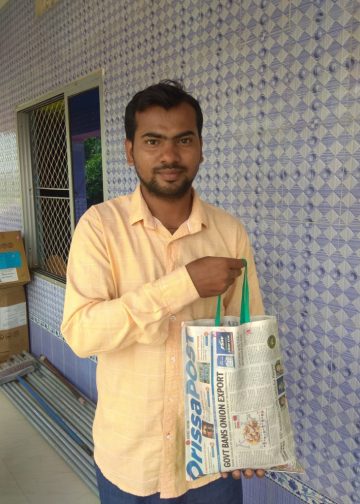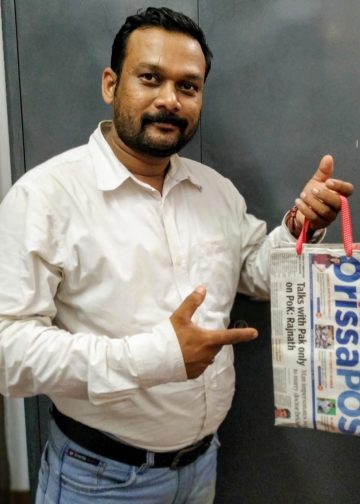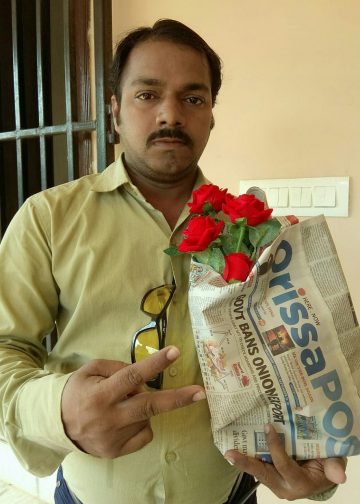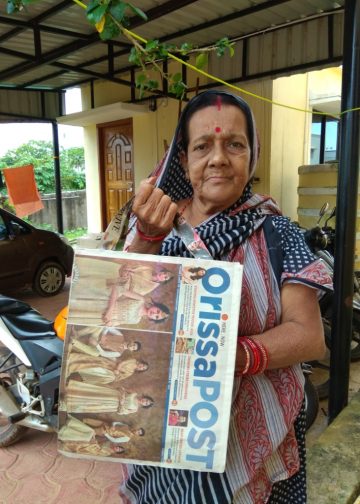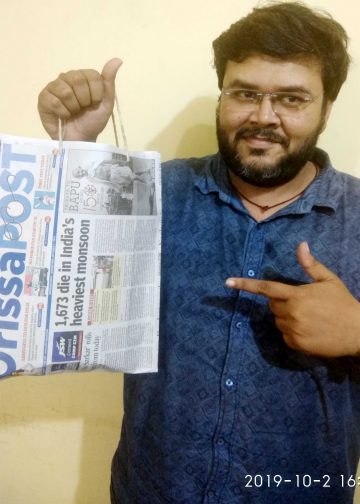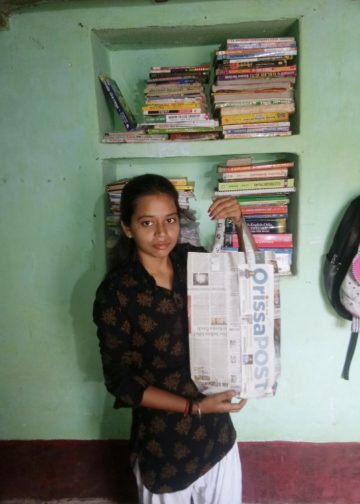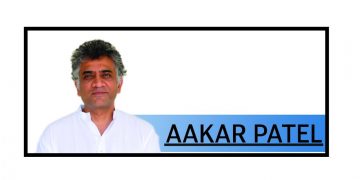PURUJEET PARIDA
Sanskrit has given way to diverse languages in day-to-day life but the vast corpus of Sanskrit literature, accumulating centuries of written and oral literary traditions, has not lost its lustre
Almost all European languages can trace their ancestry back to Latin, just like almost all north Indian languages are derived from Sanskrit. Unlike Latin, which is a dead language, Sanskrit is still very much in use in India. It is in fact one of the official languages of India, which can be found on one side of every currency note. Unlike all the other languages on the note, however, Sanskrit is reserved for special use during ceremonies. Slokas are almost as incomprehensible to most modern Indians as Latin. Our connection with Sanskrit is emotional, as it is the last straw connecting post-medieval, post-colonial India to the idyllic golden peninsula that it was purported to be in ancient times. Is that why we have the current push to promote Sanskrit in schools? Is the call to declare Sanskrit as India’s national language justified? Questions like this cannot be entirely settled with logic, as there is the weight of history, culture and emotions associated with it.
Every once in a while we get media reports of villages in India where people still use Sanskrit in their daily lives. Outside hermitic living, focused on the spiritual significance of Sanskritic texts, it is quite difficult to find such places, even in India. Four of the most prominent Sanskrit speaking villages of India are Mattur, Hoshalli in Karnataka, Jhiri in Madhya Pradesh and Sasana in Orissa. Four villages and less than 25000 native speakers of an official language of a nation of over 1.4 billion people. On the other hand, 100 per cent of all 800 million Indian Hindus are familiar with the language – its sound and style, if not its meaning.
All of Hinduism’s holy books and major religious tomes are written in Sanskrit but almost all Hindus understand and follow the translations into their regional languages, some of which are centuries old themselves. The lyrical beauty of Sanskrit prose doesn’t always carry over but the common ancestry ensures that the range of expressions and emotions, expressed in the original Sanskrit, can be accurately transcribed. Even with all the literature, it is difficult to ascertain if Sanskrit was ever the primary language of the people. In truth, the combined literary heritage of Sanskrit derived languages is at least as diverse as and ostensibly more modern than the Sanskrit texts. By definition, Sanskrit is the evolved language, as differentiated from Prakrit – the more grounded common language – spoken by common people. Was Prakrit a contemporary of Sanskrit? Were the people speaking in Prakrit when the rishis were compiling the first vedas? Is Prakrit even one language or a common name for the different language common folk used?
By many accounts, Sanskrit was the original intellectual language, defined with set rules of grammar, utilising a full phonetic alphabet, melodious to the ear when recited and memorised in verses. Sanskrit was the invention of times when oral tradition was a necessity. Maybe people did speak Sanskrit colloquially at one time but the language evolved over time, with migration and assimilation, into other languages. Throughout this process, the intellectual language came to be the language of the intellectuals. Sanskrit became the exclusive preserve of royals, nobles and Brahmins. This period in history coincides with the Gupta age, when Kalidasa’s talent found an evolved audience for the evolved language. With the turning wheels of time, the usage of pure Sanskrit became limited to rituals, ceremonies and recitals making the language the sole preserve of the intellectual class – the Brahmins.
So it has remained for centuries. Even today, we do expect the Brahmin performing rituals to be able to understand the shlokas being recited and so the knowledge of Sanskrit is expected. But it has been centuries since an original work of Sanskrit has found a large audience that is able to truly appreciate it. The language, which was once a carrier of ideas, has become a carrier of the past. In that sense, it is not alive. However it is far from being as dead as say, Latin. In Sasana, a village of about 300 households in coastal Gajapati district of Orissa, every family has a practicing pundit and is able to converse in Sanskrit. In Jhiri, people have moved towards Sanskrit (from their native Malwa language) within the last two decades. In the villages of Karnataka, the primary language is Sanskrit and people chit-chat over tea in Sanskrit. However, these villages are the clear exception to the rule that most Indians cannot converse in Sanskrit and do not have mastery over the language. Sanskrit may be alive through these villages but it maintains a precarious existence.
There is no doubt that India cannot be understood without some reference to Sanskrit texts. There is no question mark on the significance of Sanskrit or its importance in history. That is why it is an official language of India. But to demand that everyone learn to speak it is like demanding everyone learns to cook Indian food. Sure, it would be a shame if many elaborate traditional Indian recipes die out in the fast-paced modern world, but most people would still make instant noodles just because it is quick and easy. We have to find a way to make instant paratha/ biryani/ dosa taste truly authentic. We have to find other ways of preserving Sanskrit, and with it, our connection to the glorious past that we dream will materialize again in our future. Making it compulsory for everyone will just polarize people on either sides of the debate and do nothing to preserve the linguistic heritage of Sanskrit.
Linguistic revival is not nearly as dramatic or flamboyant as artistic rejuvenation. Outside Academia, we know more painters from renaissance Italy – Michelangelo, Leonardo da Vinci, Sandro Boticelli to name a few – than we know of linguists who revolutionised the usage and popularity of a language. The masterpiece of a master painter enjoys certain finality in its time and place of creation that draws in awed viewers in hushed galleries of spectacular museums even centuries later. However, the efforts of armies of linguists, painstakingly translating, preserving and commenting upon texts of the past to create the dictionary of the future are lost in the centuries of time it takes for languages to evolve. Only once in many centuries, a linguist blazes through the pages of history with outstanding original work that shines as a beacon upon the whole literary diaspora of his language. After all, a Homer, a Shakespeare or a Kalidasa is rare in the combination of overwhelming talent, favourable circumstance and ample patronage, all of which is necessary but not sufficient to guarantee that their contributions to the language will survive for centuries. Even Shakespeare could not have imagined the global reach that his works enjoy today, due to the tenacity of the British Empire in conquering new lands. Even Kalidasa could not have imagined that his beloved Sanskrit would one day be a relic of the past, invoked during rituals and auspicious occasions but remembered only as the common parent of most North Indian languages. Kalidasa’s works, if written today, would be just as compelling, but would not be as appreciated because the trifecta wouldn’t be complete without audience patronage.
As parents must give way to children with time, Sanskrit has given way to diverse languages in day-to-day life but the vast corpus of Sanskrit literature, accumulating centuries of written and oral literary traditions has not lost its lustre. Sanskrit has lost native speakers and casual users in its gradual demise through the ages but through that process, it has cemented and finalised its vast literary corpus, very much like a gigantic masterpiece that took millennia to create. There may be another Shakespeare but quite possibly, there will never be another Kalidasa, until there is. Until then, we should learn Sanskrit to appreciate our past and learn from it, but we shouldn’t try to replicate the past in the present. As Kalidasa said, “Yesterday is but a dream, tomorrow is only a vision; But a today well lived makes every yesterday a dream of happiness, and every tomorrow a vision of hope”.





